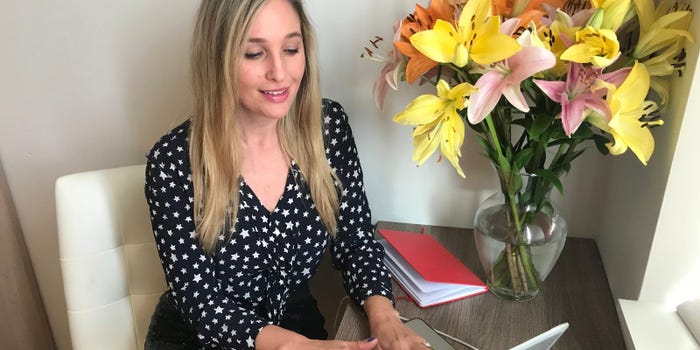5 things I do every month in my 30s to retire a millionaire by 50
5 min read5 things I do every month in my 30s to retire a millionaire by 50

Paid non-client promotion: Affiliate links for the products on this page are from partners that compensate us (see our advertiser disclosure with our list of partners for more details). However, our opinions are our own. See how we rate investing products to write unbiased product reviews.
- I didn’t care about saving for retirement in my 20s, but I’m taking steps to retire early now.
- I watch how I spend money carefully and research new options to increase my earnings.
- I’m using a SEP IRA, an investment portfolio, and CDs and savings accounts to grow my money.
In my 20s, I didn’t believe in saving for retirement. I was barely earning enough money to pay all of my bills. If I had extra money, I would spend it immediately on activities with friends, dining out, and travel. A lot of people in my life, from my old boss to financially savvy friends, would try to encourage me to start a retirement account, but I ignored them. It felt too hard to put money away for the future when I could hardly get myself to save any now.
But right before I turned 30, I realized that I wanted to reverse a lot of my financial habits so that I could achieve big personal goals. In addition to growing my net worth, I also wanted to find a way to retire by the age of 50 as a millionaire. With no retirement account and very little cash in savings, I’ve spent the first five years of my 30s being strategic with my finances.
Here are the five ways I’m working toward that goal on a monthly basis.
1. I keep a close eye on every dollar coming in and out
In the past, the idea of sticking to a budget or monitoring my finances seemed too stressful. But because I rarely looked at my bank accounts or credit card statements, my spending was out of control.
In order to make sure I’m progressing toward my goal of being a retired millionaire by 50, I keep a close eye on every dollar that comes in and out of my account.
I stick to a strict spending budget every month. I make sure I’m spending a smaller fraction of my earnings than I have in the past so I can make up for lost time and save more.
First, I break down how much I’m allowed to spend across different categories, from food to clothing, and track my daily spending in each category. On the 15th of each month, I look at my budget versus what I’ve already spent and then refigure how I plan to make it through the rest of the month without going a penny over. If that means having to cancel plans or do more meal prep, being aware allows me to not make a big financial mistake like going a couple hundred — or a thousand — dollars over my budget every month.
2. I’m always exploring new income streams
After getting laid off from my full-time job in 2015, I decided to become an entrepreneur. My main goal was to double my income from that job and to continue to find ways to earn more than I could working at a company.
To do that, I have multiple streams of income that come from a range of products and services. I also have different passive income streams that allow me to scale how much I’m able to earn as a solopreneur every month. These passive income streams include selling digital products (courses and books), dividends from investments, and affiliate revenue.
Since one of the biggest ways I’ll be able to hit my big goal of retiring as a millionaire is to find more ways to bring in additional income, I spend around five hours a month researching new streams of income I can try out so I can increase my yearly earnings.
3. I’m focusing on my retirement contributions
I waited until I was thirty to open a retirement fund (a SEP IRA) and make contributions. Not only does a retirement account provide me with financial benefits now, like tax deductions, but it will also help me support my lifestyle in the future when I decide to stop working and cash in on the money that’s been growing in that account with compound interest.
Even though I want to spend the money now, I make sure to contribute a percentage of my income every month to my SEP IRA retirement account.
4. I’m sticking to an investment plan
When I started to get more strategic with my money, I was able to start saving more every month. A few years ago, I finally started investing some of that cash in different places based on both long-term and short-term goals. I worked with a financial advisor to figure out a portfolio of stocks, bonds, index funds, and more. The best financial advisors can be invaluable to your financial journey.
I make recurring monthly investments in these accounts to benefit from compounding returns that can hopefully help me grow my net worth.
5. I’m keeping my current cash growing
Even though I take a portion of my income every month and put it into different investments, I also keep a portion of the cash in my bank accounts. One big financial mistake I made in my 20s was keeping any extra cash I had in a low-interest-generating savings account. Now, I make sure that I keep any extra money I have in accounts that allow it to continue to grow.
For example, earlier this year, I put the majority of my cash into high-yield savings accounts and CDs with interest rates from 4% to 5%. Since I’m not sure what to do with this extra money, at least in the short term period it’s sitting idle and continuing to earn compounding interest.
Discover more from Slow Travel News
Subscribe to get the latest posts sent to your email.




